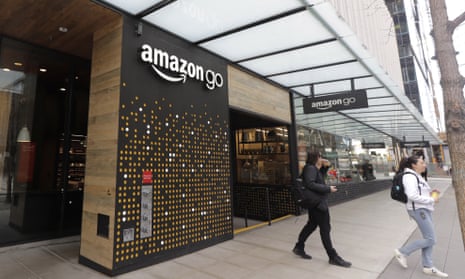Paying for something in the shops with just a wave of your hand is a step closer to everyday reality with the news that retail giant Amazon is trialing its palm-scanning payment technology in Whole Foods.
The contactless payment method, known as Amazon One, was installed at one of the grocery stores in Seattle on Tuesday.
The technology involves customers enrolling their palms in Amazon’s system to make payments with their palm “signature” by linking them with their credit cards. Amazon creates the signature by analyzing the lines, creases, veins, bones, soft tissue or other structures beneath the epidermis of the user’s palm, according to a patent filed by the retail giant in 2019.
Customers can make payments by hovering their hands over the reader device. The signature is then stored in a data cloud, which some have warned can lead to potential exposure to hackers or other malicious actors.
The move comes after the Covid-19 pandemic propelled a demand for contactless payment to mitigate the spread of the virus. The company, owned by the billionaire Jeff Bezos, plans to expand the biometric technology to seven other stores in the coming months.
However, the emerging payment method is raising privacy concerns from the technology Amazon uses to link a customer’s palm signature with their credit card.
“Biometric information is at higher risk of malicious actors, hackers and targeted attacks because the data can’t be changed if it’s compromised,” said Paige Bartley, senior research analyst for the Data, Artificial Intelligence and Analytics Channel at 451 Research, a part of S&P Global Market Intelligence.
“If your credit card is stolen, you can go cancel that card and change the number for it. When you have biometric information being stored, such as a palm print, and that information is compromised, I can’t change my palm print.
Amazon One was first released in September last year and was only available in select Amazon Go stores.
When Amazon One was first announced, Dilip Kumar, vice-president of physical retail & technology at Amazon, said the company had big plans for expanding the technology across different sectors.
“We believe Amazon One has broad applicability beyond our retail stores, so we also plan to offer the service to third parties like retailers, stadiums and office buildings so that more people can benefit from this ease and convenience in more places,” said Kumar in September 2020.
According to Bartley, consumer behavior is malleable given the context of the past year with the pandemic. “This is a pivotal moment because customers are trying new ways to reduce transmission,” said Bartley.
Amazon’s emerging technology has also been criticized for its potential to eliminate jobs.
“The brutal truth is that Amazon is focused on one thing – eliminating as many jobs as possible,” Marc Perrone, the president of the United Food and Commercial Workers International Union, which represents grocery workers, told USA Today referring to Amazon Go Grocery stores.
